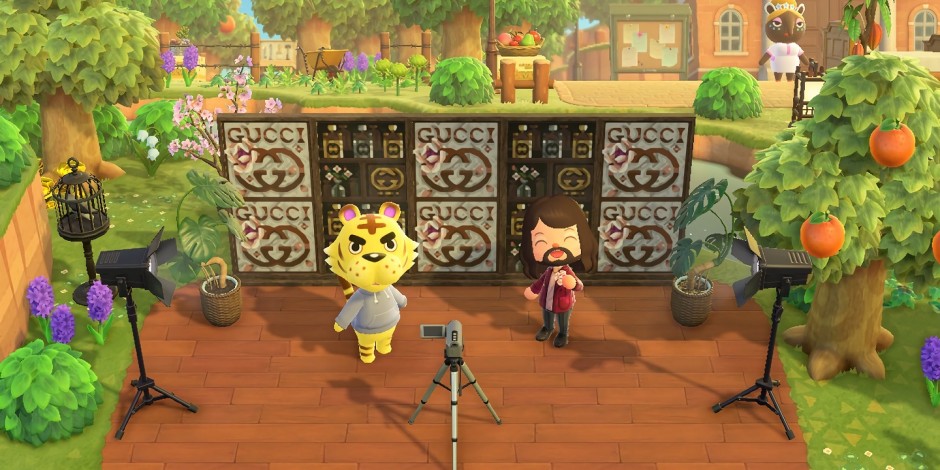
Gaming is no longer all about achieving objectives. The popularity of social games and virtual landscapes have resulted the advent of the metaverse and given rise to games-as-a-platform. As part of our deep dive into all things gaming, we look at the opportunities these online social spaces present for brands wanting to reach the billions-strong gaming audience.
The value of virtual items has never been higher. The rise of non-fungible tokens (NFTs) and cryptocurrencies have introduced the idea that there is value to art and content regardless of its physical existence. Articles have been auctioned off for hundreds of thousands of dollars and NFTs have been minted from beloved memes.
At the same time, the moments people spend in virtual spaces have erased the boundaries between ‘real life’ and online. Over the course of the pandemic, lockdown has forced us to interact with people over video calls and in virtual environments in games including Animal Crossing and Fortnite. There has been a resurgence in hours spent in VRChat and people are just as likely to sign up to VTubers as they are to any ‘real’ YouTube star.
That has lent virtual spaces a new license to be seen as a marketing channel. If the experiences we have online are no less real than those we have on the street or when watching TV, why should the impact of marketing in those spaces be any less effective? Combine this with a hugely accelerated e-commerce space and you have brands clamoring to exist in gaming’s metaverse.
The new social spaces
Unsurprisingly, it’s younger audiences who are most habituated to the new online spaces. Christian Perrins is head of strategy at gaming specialist agency Waste and he argues that a lack of distinction between online and offline experiences is creating a huge opportunity for brands: “If you zoom out and look at the gaming behaviors of younger gen Z players, there’s a clear sign that gaming environments are social spaces first and foremost. They aren’t channels that operate in a vacuum, they’re cultural touchpoints where young people meet, compete, collaborate and create.
“Time in games bleeds into social currency, real-life conversations and behaviors. It’s as embedded as TV was for gen X and boomers, except it’s participatory rather than passive and open-ended rather than scripted. As a result, game publishers are shifting at speed to build the most distinctive, most involving and most rewarding spaces that will drive years and years of lifetime belonging and value.”
And while there are plenty of opportunities for brands to sit alongside gaming content through advertising, the real opportunity lies in accessing those spaces. The cultural phenomenon that is Fortnite had blazed a trail ahead of lockdowns, with trailer premieres for IPs including Star Wars and huge live virtual concerts, and is now being used to cross-promote other entertainment brands.
Those trends have themselves been accelerated by the pandemic and that has created a space for brands outside of gaming to unobtrusively make themselves a part of the metaverse. Nintendo’s Animal Crossing: New Horizons was incredibly successful due to it providing a social space that allowed its players to share their creativity at a time they couldn’t do so in-person. This opened the door to fashion and home brands to get involved as well.
Ikea Taiwan capitalized on the in-game furniture craze by recreating its catalog in-game, which provided a link between Ikea-themed islands in the game itself to its own platform and store. KFC in the Philippines went one step further, offering real-world rewards for visiting its official island and spotting ‘the Colonel’ – really an employee in custom garb made up to look like the chicken brand’s mascot.

Gucci Beauty, too, took advantage of the social aspects of the metaverse by teaming up with Animal Crossing influencers to create its own island. This brought in elements of its preexisting Gucci Guilty ad campaign and replicated it as best as possible through the game’s assets.
Authentic virtuality
Those are only a few of the efforts by brands to capitalize on the metaverse – and only for a single game which, despite its popularity, was never designed to allow marketing of that kind to exist at all. Games with more robust creative tools – such as Minecraft and Roblox – and developer tools like those behind the scenes at Fortnite are set to capitalize even further.
This is accelerated by the sheer scale of the gaming market in 2021. In the last year there has been a 50% increase in the number of mobile gamers in the UK alone, which totals 8.6 million new players – this presents new opportunities for marketers looking to reach into the metaverse. The widespread availability of tech means that AR games on mobile have a real chance to create a social metaverse of their own, into which savvy brands can insert themselves.
Natalia Vasilyeva, the vice-president of marketing at in-game advertising platform Anzu, says: “Gaming as an ecosystem seems to be every marketer’s dream. Whatever is not possible in other channels can be tested in gaming. Every marketer can find something for themselves in the gaming world. From billboards to video, customized and interactive ads, brands have vast opportunities in the way they can communicate with gamers – and gamers are ready for it.”
Despite this, there is still concern that brands’ intrusion into the metaverse is anathema to the core gaming audience. Perrins argues that, given how gaming behaviors driven by the pandemic will persist, it’s past time for brands to truly understand their audiences: “You have to accept that games will become more and more important spaces for brands to not only debut and launch in, but to exist in permanently. And if they want to thrive, they should drop the debate and start understanding the culture and tribes immediately.”
The metaverse as a concept was almost inevitable, given the rise of social games and virtual spaces. Despite that, it is yet to be fully proven as a marketing channel. As companies like Epic Games continue to push their virtual spaces – and games like Animal Crossing accidentally open the door for brands to reach those gaming audiences – we’re set to see a huge amount of experimentation around the metaverse.
—
Guest Author: www.thedrum.com
This article first appeared in www.thedrum.com Seeking to build and grow your brand using the force of consumer insight, strategic foresight, creative disruption and technology prowess? Talk to us at +971 50 6254340 or engage@groupisd.com or visit www.groupisd.com/story
